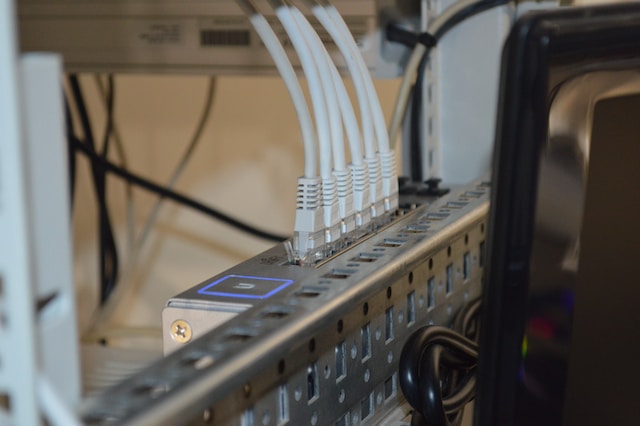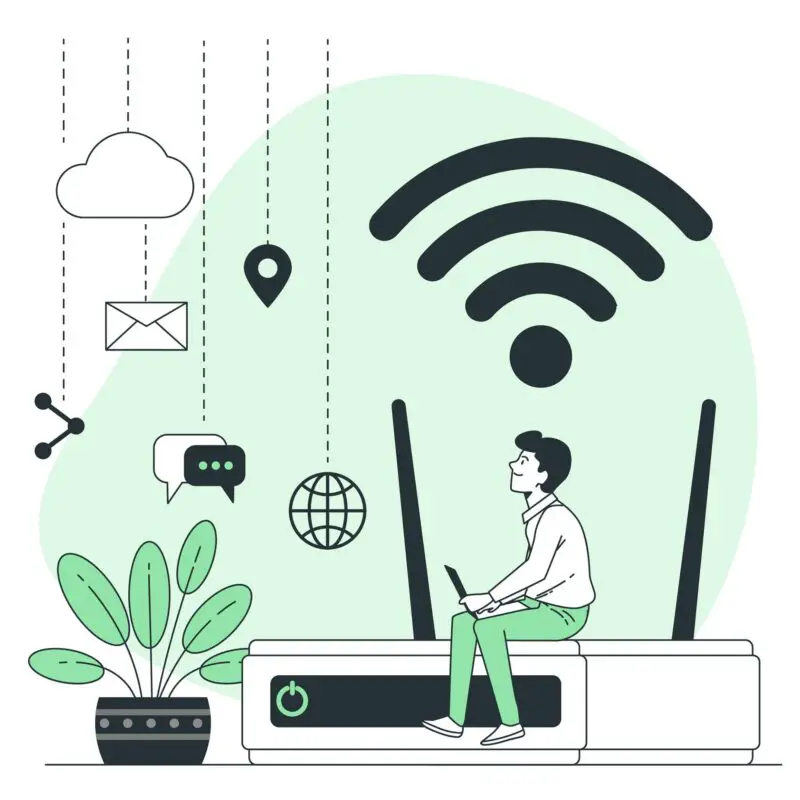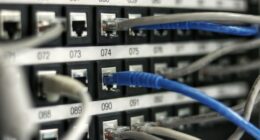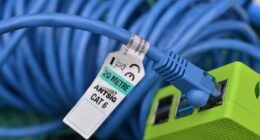Packet switching and circuit switching are two different methods of transmitting data over a network. While both have their advantages and disadvantages, it ultimately depends on the specific needs of your organization.
Packet Switching
(Photo by Thomas Jensen on Unsplash )

Packet switching is a method of transmitting data that breaks it down into small, manageable chunks called packets. Each packet contains information about its destination and the order in which it should be reassembled once it reaches its final destination. These packets are then sent over the network individually, taking different paths to their ultimate destination.
One of the main advantages of packet switching is that it allows for more efficient use of network resources. Because each packet can take a different path through the network, multiple transmissions can occur simultaneously without causing congestion or delays.
Another benefit of packet switching is its ability to handle errors and data loss. If one packet gets lost or corrupted during transmission, only that specific packet needs to be resent rather than the entire message.
However, there are also some drawbacks to using packet switching. The process of breaking down messages into individual packets adds extra overhead and processing time, which can cause delays in transmission. Additionally, because packets can take different routes through the network, they may arrive out of order at their final destination – requiring additional processing power to reassemble them correctly.
Despite these challenges, today’s Internet relies heavily on packet switching technology as an efficient way to transmit data across vast networks with minimal delay and error rates.
Circuit Switching
(Photo by Diogo Brandao on Unsplash )

Circuit switching is a traditional method of communication that has been in use since the early days of telephony. It works by establishing a dedicated physical connection between two devices for the duration of the conversation. This means that all data, voice or video transmitted over the circuit follows one path and is reserved exclusively for those two parties until they end their call.
One advantage of circuit switching is that it provides high-quality connections with minimal delays because there’s no need to wait for packets to be forwarded from node to node like in packet switching. Additionally, it offers guaranteed bandwidth which ensures that users will always receive a consistent level of service regardless of network traffic.
However, circuit-switched networks can be expensive and inefficient since they require constant resources even when not in use. Moreover, due to their static nature, these networks cannot easily adapt to varying traffic patterns or efficiently handle bursts in demand as experienced during peak hours.
Examples of Circuit Switching include telephone systems where callers establish a dedicated line before speaking with each other as well as ISDN (Integrated Services Digital Network) which sets up digital circuits on-demand between endpoints for voice and data transmissions.
Packet switching Vs. circuit switching – Key differences
Packet switching and circuit switching are two different methods of transmitting data across a network. In packet switching, data is broken down into small packets that are sent separately to their destination through the most efficient route available. On the other hand, in circuit switching, a dedicated path or circuit is established between the sender and receiver for the duration of communication.
One key difference between packet switching and circuit switching is their approach to bandwidth usage. Packet switching enables multiple users to share network resources, which makes it more efficient than circuit-switching in terms of bandwidth utilization. Circuit-switching reserves bandwidth for each connection regardless of whether it’s being used or not.
Another important difference relates to reliability. Packet-switched networks can accommodate errors by retransmitting lost or corrupted packets while maintaining high-quality service levels overall. In contrast, if there’s an error in a circuit switched network connection, it may result in complete loss of communication until repairs have been made.
Both types of networks offer advantages and disadvantages based on specific requirements such as cost-effectiveness, speed, latency tolerance etc., making them suitable for various applications ranging from voice calls over telephony lines (circuit) to streaming videos over the internet (packet).
Comparison of Packet Switching and Circuit Switching
Packet switching and circuit switching are two different methods of transmitting data over a network. In packet switching, data is divided into small packets before being transmitted. Each packet contains the address of its destination and is sent separately to the receiver through various routes. While in circuit switching, a dedicated communication path or channel is established between two devices for the duration of their conversation.
The main difference between these two techniques lies in their approach to handling network traffic. Circuit switching guarantees a constant connection throughout the entire transmission, while packet switching allows multiple transmissions to occur simultaneously on one channel.
In terms of efficiency, packet-switched networks offer better utilization of available bandwidth since they allow multiple users to share resources at any given time. On the other hand, circuit-switching provides faster and more reliable connections because it creates an exclusive connection for each user.
One disadvantage with circuit-switching networks is that they can be expensive as they require a dedicated line during communication, regardless if data was being transmitted or not . Packet-switched networks do not have this problem since they only use up bandwidth when actual data transmission occurs.
Both techniques have their distinct advantages and disadvantages depending on various factors such as cost implications and desired transmission speed/security needed by an organization or individual user.
Advantages and Disadvantages of Packet Switching
Advantages and Disadvantages of Packet Switching
Packet switching is a modern data transmission technology that has revolutionized the way information is sent over networks. It breaks down data into small packages called packets and sends them to their destination through the most efficient route available. This technique comes with several advantages, which include:
Firstly, packet switching allows for multiple connections to be established simultaneously on the same network. This means that users can send and receive information without interfering with each other.
Secondly, packet switching ensures faster transmission of data as there are no dedicated lines between sender and receiver. The packets are routed dynamically to their destination, resulting in quicker communication.
However, just like any other technology, packet switching also has some disadvantages which include:
The main disadvantage of packet switching is its vulnerability to security threats such as hacking or cyber-attacks. As packets travel through various routes before reaching their final destination, they become more exposed to unauthorized access by hackers.
Another disadvantage of packet switching is the possibility of congestion on a network. In situations where too many users compete for bandwidth at once, it may result in slow connectivity or even complete system failure.
While there are both pros and cons associated with using packet-switched networks; its speedier transmission rate makes it an optimal choice for individuals seeking quick connectivity speeds at all times
Advantages and Disadvantages of Circuit Switching
Circuit switching was the primary method of communication for decades, and it still has some advantages over packet switching. One of its main advantages is that it provides a dedicated connection between two points, meaning that bandwidth is reserved solely for those endpoints. This results in consistent and predictable performance with no delays caused by contention or congestion.
Another advantage of circuit switching is that it’s relatively simple to implement since there are no complex protocols involved. It also guarantees data integrity since packets are not broken down into smaller units during transmission.
However, circuit-switched networks have some disadvantages too. The biggest disadvantage is that the resources allocated to a call remain tied up even if there’s no data being transmitted, which can lead to network inefficiencies.
Furthermore, circuit-switched networks are not flexible when it comes to handling different types of traffic because they require a fixed amount of bandwidth per call. This means that large amounts of unused capacity can be wasted on low-bandwidth calls.
Circuit switched networks tend to be expensive compared to packet switched ones because they require more infrastructure such as switches and cables due to their dedicated nature.
While circuit switching had its glory days before giving way to packet-switching technologies; nowadays we only see circuits used in specific scenarios where guaranteed quality-of-service (QoS) and reliability at all times might be crucial for applications such as emergency services or air traffic control systems.
Examples of packet switching and circuit switching
Examples of packet switching and circuit switching are abundant in our everyday life, even if we don’t realize it. One common example of packet switching is the internet, where data is broken down into smaller packets and sent through various routes to reach its destination.
In contrast, a phone call using landline technology is an example of circuit switching. When you make a phone call, a dedicated line connects your device to the recipient’s device until the conversation ends.
Packet switching can also be seen in applications like email and messaging services that rely on transmitting small packets rather than establishing a continuous connection between devices. On the other hand, circuit-switched networks are still used by traditional telecommunication service providers for voice communication over fixed lines.
Another example of packet switching would be video streaming services like Netflix or YouTube, which send data in small pieces over different network paths to ensure efficient delivery without interruption. In comparison, satellite TV transmission uses circuit-switching techniques since it requires consistent connectivity to deliver high-quality signals without any disturbance.
Understanding these examples can help us appreciate how both technologies have their unique advantages for specific use cases.
Featured Image By – storyset on Freepik








